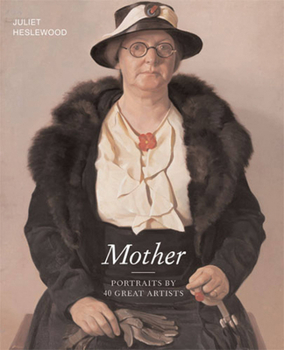Mother: Portraits by 40 Great Artists
Artists paint their mothers for many reasons -- as a loving tribute, of course, but also to capture a memorable face, to work through conflicting emotions, as a family legacy, or the simple availability of a model. Looking at each work and considering its individual history reveals much about the relationship, the artist, and about the time and place in which it was created. Mother collects more than 40 of these fascinating portraits. Selected by art historian Juliet Heslewood, the portraits are displayed chronologically, and the changing nature of the subject can be seen as time progresses over the centuries to the present day. Text accompanying each portrait provides compelling background information about the artist and his or her mother, the mother's impact on the artist's career, and the artist's painting style. Among the painters represented are Rembrandt, Rossetti, Van Gogh, Sargent, Picasso, Kahlo, and Hockney.
Format:Hardcover
Language:English
ISBN:0711229651
ISBN13:9780711229655
Release Date:May 2009
Publisher:Frances Lincoln
Length:96 Pages
Weight:0.90 lbs.
Dimensions:8.5" x 0.6" x 7.0"
Customer Reviews
1 rating
artists from all eras depict their mothers
Published by Thriftbooks.com User , 16 years ago
With its smaller size, color illustrated covers, and front and back cover lettering of indented silvered letters, it's as much gift book as art book. The subject matter too makes for the gift book style--suggestive of sentimentality and aiming for wide appeal. Forty paintings of mothers by mostly major, commonly-known artists from Durer to Tom Phillips (b. 1937) are featured chronologically. Rembrandt, Manet, Sargent, Van Gogh, Chagall, Henry Moore, and Lucien Freud are among the artists; with Guido Reni, Hyacinthe Rigaud, and Axel Gallen-Kallela among the lesser-knowns rounding out the forty. The paintings are within the style of realism. No cubist fragmentations, fauvist flights of imagination, or surrealist symbolizations. Only Leger contorts somewhat. You'd recognize the mothers in the paintings. As Heslewood points out, "[I]f an artist didn't really get on with their mother, they simply didn't paint her." Even Picasso and Frida Kahlo suspended their characteristic styles when depicting their mothers in favor of naturalness. Heslewood's commentary on the paintings variously covers what is known about the respective mother (not much in many cases), the career of the artist, and style and historical elements in the painting. Though artists did not subject their mothers to much stylistic distortion in any era, as Heslewood points out in the Introduction, they did use paintings of their mothers as opportunities to portray clothing, human features, and flesh. In some cases, the artist wanted to commemorate his mother's hard life (as a peasant, for instance) or idealize her a bit by picturing her in better clothes than she had.






